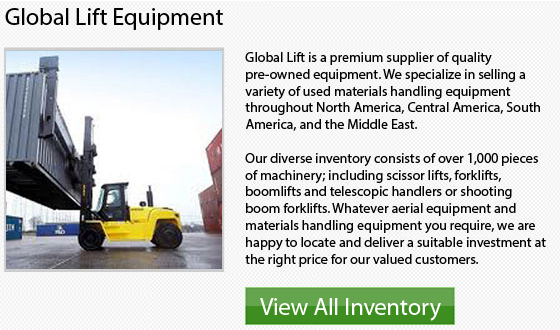
The following add-ons are useful for narrow aisle forklifts:
Side shift: The side shift option allows the movement of the load laterally without having to move the truck. This allows loads to be placed with much more precision.
Tilt mast: The optional tilt mast allows the forks to shift both forwards and backwards. This is great in situations where loads aren't entirely level. To gain more stability when moving a truck that is loaded, the mast can be tilted backwards.
Extendable forks: Extendable forks help the reach of a forklift to allow for the stacking of pallets one in front of the other. This is known as double deep loading.
Operator platforms: Several NA forklifts have operator platforms which could lower and raise the operator while at the same time raising and lowering the forklifts forks. This offers utmost control and visibility while handling cargo at heights of 6 m to 9 m.
Lift Truck on a Ramp
Drivers need to be correctly taught and are required to be tested and certified. It is important for anyone utilizing a forklift to be really educated about safety issues and rules. Drivers should understand how to make adjustments on uneven surfaces or in situations where the load weight alters the center of gravity. Safety rules include the safe operation of a forklift on a ramp, which is always happening as the driver would typically have to drive down and up ramps to load and unload containers.
Tips for Using a Forklift on a Ramp
1 Drive at slow speeds when approaching a ramp and when driving up and down the ramp. The possibility of mishaps is increased while driving fast as this could upset the machine's center of gravity.
2 While not carrying a load, drive the lift truck in reverse while moving up an incline on a ramp.
3 Drive forward when moving down an incline on the ramp with no load.
4 Tilt the forks a little back to shift the center of the load to the equipment's front, while moving up or down a ramp while carrying a load.
5 To make the load more steady, drive forward up a ramp while carrying a load.